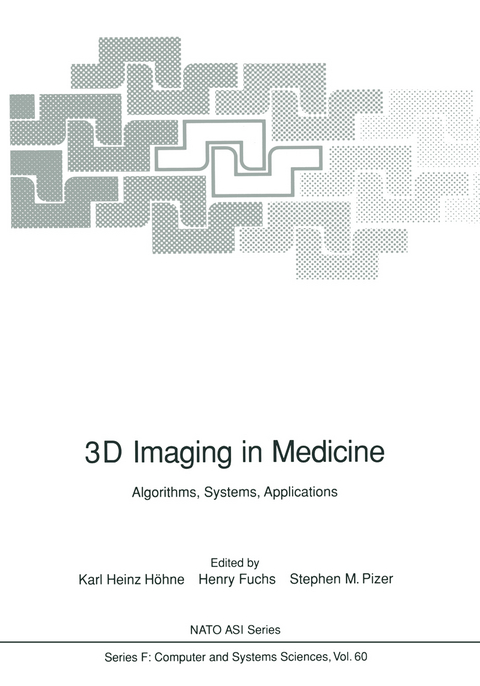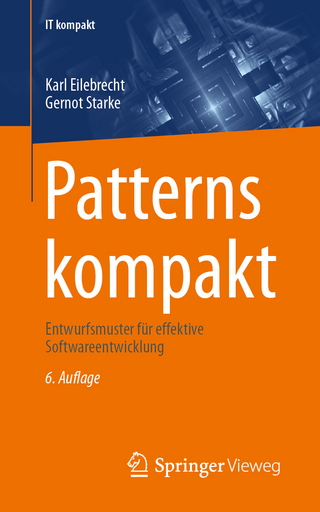
3D Imaging in Medicine
Springer Berlin (Verlag)
978-3-642-84213-9 (ISBN)
The visualization of human anatomy for diagnostic, therapeutic, and educational pur poses has long been a challenge for scientists and artists. In vivo medical imaging could not be introduced until the discovery of X-rays by Wilhelm Conrad ROntgen in 1895. With the early medical imaging techniques which are still in use today, the three-dimensional reality of the human body can only be visualized in two-dimensional projections or cross-sections. Recently, biomedical engineering and computer science have begun to offer the potential of producing natural three-dimensional views of the human anatomy of living subjects. For a broad application of such technology, many scientific and engineering problems still have to be solved. In order to stimulate progress, the NATO Advanced Research Workshop in Travemiinde, West Germany, from June 25 to 29 was organized. It brought together approximately 50 experts in 3D-medical imaging from allover the world. Among the list of topics image acquisition was addressed first, since its quality decisively influences the quality of the 3D-images. For 3D-image generation - in distinction to 2D imaging - a decision has to be made as to which objects contained in the data set are to be visualized. Therefore special emphasis was laid on methods of object definition. For the final visualization of the segmented objects a large variety of visualization algorithms have been proposed in the past. The meeting assessed these techniques.
Biomedical engineering and computer science now offer the potential of producing natural 3D views of the human anatomy of living subjects. This proceedings volume summarizes the state of the art. It addresses not only researchers and engineers but also potential medical users.
Image Acquisition.- Magnetic Resonance Imaging.- 3D Echography: Status and Perspective.- Object Definition.- Network Representation of 2-D and 3-D Images.- Segmentation and Analysis of Multidimensional Data-Sets in Medicine.- Toward Interactive Object Definition in 3D Scalar Images.- Steps Toward the Automatic Interpretation of 3D Images.- Image Processing of Routine Spin-Echo MR Images to Enhance Vascular Structures: Comparison with MR Angiography.- A Multispectral Pattern Recognition System for the Noninvasive Evaluation of Atherosclerosis Utilizing MRI.- 3D Reconstruction of High Contrast Objects Using a Multi-scale Detection / Estimation Scheme.- Matching Free-form Primitives with 3D Medical Data to Represent Organs and Anatomical Structures.- Visualization.- A Survey of 3D Display Techniques to Render Medical Data.- Rendering Tomographic Volume Data: Adequacy of Methods for Different Modalities and Organs.- Intermixing Surface and Volume Rendering.- Combined 3D-Display of Cerebral Vasculature and Neuroanatomic Structures in MRI.- Preliminary Work on the Interpretation of SPECT Images with the Aid of Registered MR Images and an MR Derived 3D Neuro-Anatomical Atlas.- Volume Visualization of 3D Tomographies.- Echocardiographic Three-Dimensional Visualization of the Heart.- Object Manipulation and Interaction.- Surface Modeling with Medical Imagery.- Manipulation of Volume Data for Surgical Simulation.- Computer Assisted Medical Interventions.- Systems.- Systems for Display of Three-Dimensional Medical Image Data.- A Software System for Interactive and Quantitative Analysis of Biomedical Images.- CARVUPP: Computer Assisted Radiological Visualisation Using Parallel Processing.- Applications.- A Volume-Rendering Technique for Integrated Three-Dimensional Display of MR and PET Data.- Computer Assisted Radiation Therapy Planning.- CAS - a Navigation Support for Surgery.- Three-Dimensional Imaging: Clinical Applications in Orthopedics.- 3D Morphometric and Morphologic Information Derived from Clinical Brain MR Images.- List of Authors.
| Erscheint lt. Verlag | 8.12.2011 |
|---|---|
| Reihe/Serie | NATO ASI Subseries F: |
| Zusatzinfo | IX, 460 p. |
| Verlagsort | Berlin |
| Sprache | englisch |
| Maße | 170 x 242 mm |
| Gewicht | 806 g |
| Themenwelt | Mathematik / Informatik ► Informatik ► Software Entwicklung |
| Schlagworte | 3D • algorithms • Bildverarbeitung • Hardwaresysteme • Image Processing • Objektbehandlung • Visualisierung • Visualization |
| ISBN-10 | 3-642-84213-5 / 3642842135 |
| ISBN-13 | 978-3-642-84213-9 / 9783642842139 |
| Zustand | Neuware |
| Haben Sie eine Frage zum Produkt? |
aus dem Bereich


